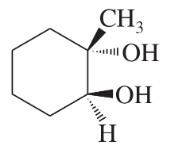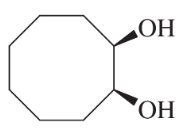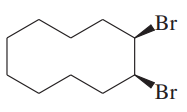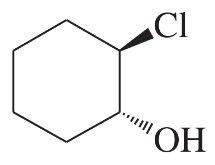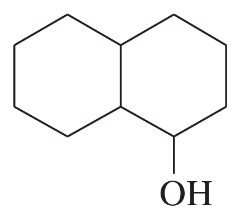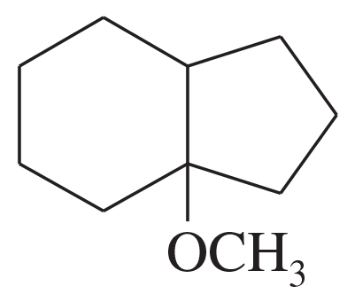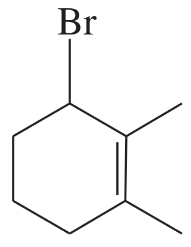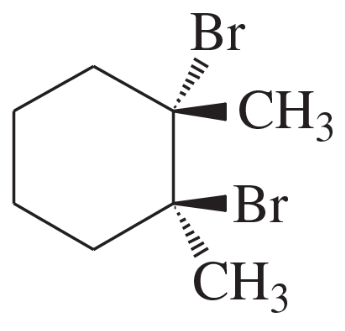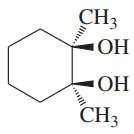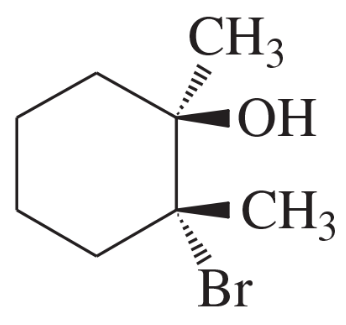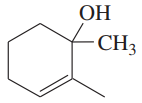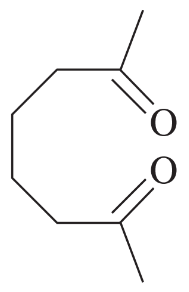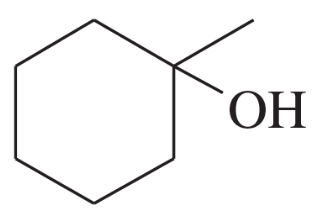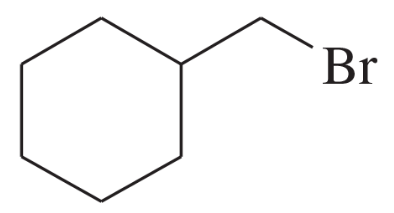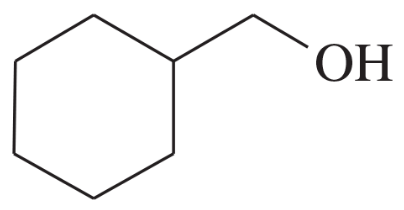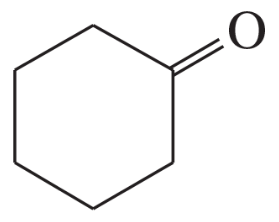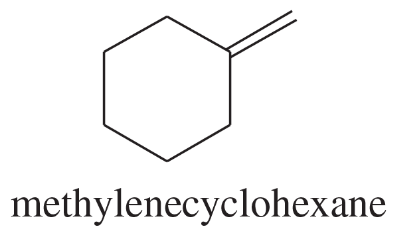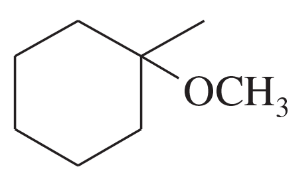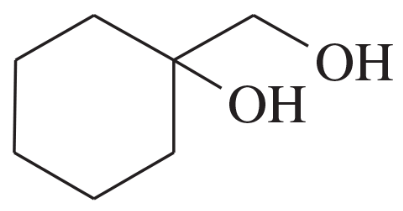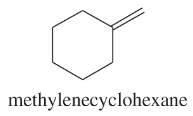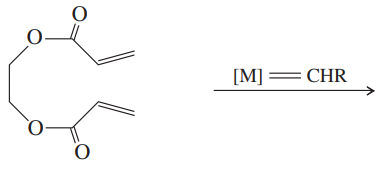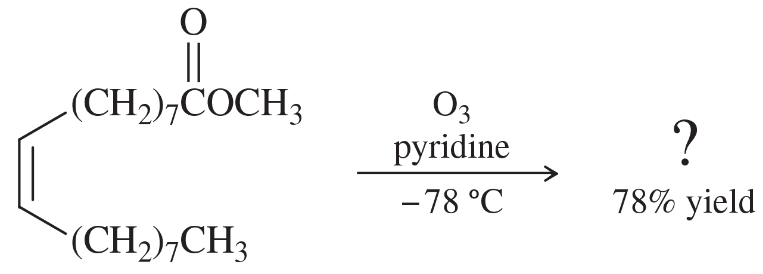 Back
BackProblem 49a
Show how you would make the following compounds from a suitable cyclic alkene.
(a)
Problem 49b
Show how you would make the following compounds from a suitable cyclic alkene.
(b)
Problem 49c
Show how you would make the following compounds from a suitable cyclic alkene.
(c)
Problem 49d
Show how you would make the following compounds from a suitable cyclic alkene.
(d)
Problem 49e
Show how you would make the following compounds from a suitable cyclic alkene.
(e)
Problem 49f
Show how you would make the following compounds from a suitable cyclic alkene.
(f)
Problem 50a
Using 1,2-dimethylcyclohexene as your starting material, show how you would synthesize the following compounds. (Once you have shown how to synthesize a compound, you may use it as the starting material in any later parts of this problem.) If a chiral product is shown, assume that it is part of a racemic mixture.
(a)
Problem 50c
Using 1,2-dimethylcyclohexene as your starting material, show how you would synthesize the following compounds. (Once you have shown how to synthesize a compound, you may use it as the starting material in any later parts of this problem.) If a chiral product is shown, assume that it is part of a racemic mixture.
(c)
Problem 50d
Using 1,2-dimethylcyclohexene as your starting material, show how you would synthesize the following compounds. (Once you have shown how to synthesize a compound, you may use it as the starting material in any later parts of this problem.) If a chiral product is shown, assume that it is part of a racemic mixture.
(d)
Problem 50e
Using 1,2-dimethylcyclohexene as your starting material, show how you would synthesize the following compounds. (Once you have shown how to synthesize a compound, you may use it as the starting material in any later parts of this problem.) If a chiral product is shown, assume that it is part of a racemic mixture.
(e)
Problem 50g
Using 1,2-dimethylcyclohexene as your starting material, show how you would synthesize the following compounds. (Once you have shown how to synthesize a compound, you may use it as the starting material in any later parts of this problem.) If a chiral product is shown, assume that it is part of a racemic mixture.
(g)
Problem 50h
Using 1,2-dimethylcyclohexene as your starting material, show how you would synthesize the following compounds. (Once you have shown how to synthesize a compound, you may use it as the starting material in any later parts of this problem.) If a chiral product is shown, assume that it is part of a racemic mixture.
(h)
Problem 50i
Using 1,2-dimethylcyclohexene as your starting material, show how you would synthesize the following compounds. (Once you have shown how to synthesize a compound, you may use it as the starting material in any later parts of this problem.) If a chiral product is shown, assume that it is part of a racemic mixture.
(i)
Problem 51a
Show how you would synthesize each compound using methylenecyclohexane as your starting material.
(a)
Problem 51b
Show how you would synthesize each compound using methylenecyclopentane as your starting material.
(b)
Problem 51c
Show how you would synthesize each compound using methylenecyclohexane as your starting material.
(c)
Problem 51d
Show how you would synthesize each compound using methylenecyclohexane as your starting material.
(d)
Problem 51e
Show how you would synthesize each compound using methylenecyclohexane as your starting material.
(e)
Problem 51f
Show how you would synthesize each compound using methylenecyclohexane as your starting material.
(f)
Problem 51g
Show how you would synthesize each compound using methylenecyclohexane as your starting material.
(g)
Problem 51h
Show how you would synthesize each compound using methylenecyclohexane as your starting material.
(h)
Problem 51i
Show how you would synthesize each compound using methylenecyclohexane as your starting material.
(i)
Problem 52a
Show what products you would expect from the following metathesis reactions, using the Schrock or Grubbs catalysts.
(a)
Problem 52b
Show what products you would expect from the following metathesis reactions, using the Schrock or Grubbs catalysts.
(b)
Problem 52c
Show what products you would expect from the following metathesis reactions, using the Schrock or Grubbs catalysts.
(c)
Problem 53
Show how you might use olefin metathesis to assemble the following alkenes from smaller units:
(a)
(b)
Problem 54a,b
Professor Patrick Dussault (University of Nebraska at Lincoln) has developed an alternative to the standard two-step ozonolysis procedure requiring reduction of the ozonide in a second step. He uses 2 to 3 equivalents of pyridine, a mildly basic organic solvent, in a one-step process (Organic Letters, 2012, 14, 2242). Show the products you expect from the following examples.
(a)
(b)
Problem 54c,d
Professor Patrick Dussault (University of Nebraska at Lincoln) has developed an alternative to the standard two-step ozonolysis procedure requiring reduction of the ozonide in a second step. He uses 2 to 3 equivalents of pyridine, a mildly basic organic solvent, in a one-step process (Organic Letters, 2012, 14, 2242). Show the products you expect from the following examples.
(c)
(d)
Problem 55a
Complete each synthesis by providing the structure of the major product at each step, including any important stereochemistry.
a.
Problem 55b,c,d
Complete each synthesis by providing the structure of the major product at each step, including any important stereochemistry.
b.
c.
d.

